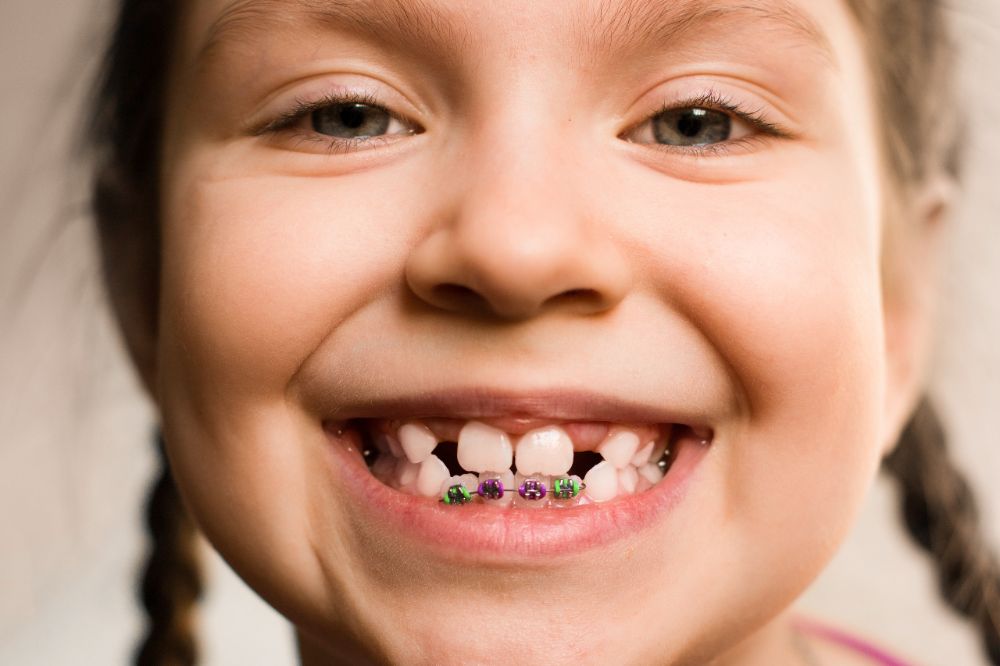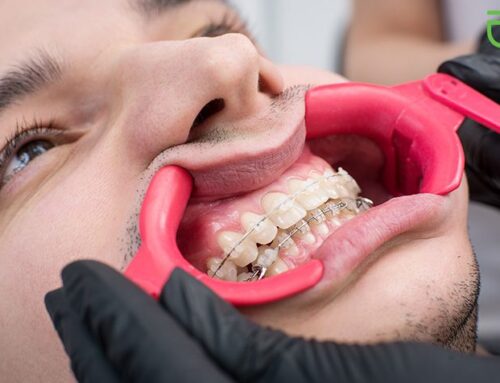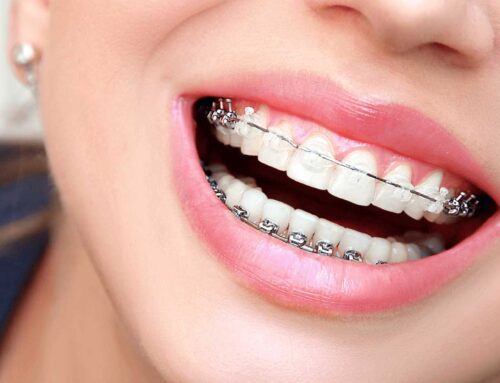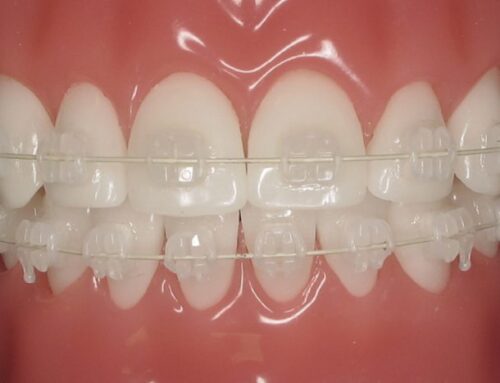How Old Should You Be for Braces? And What Kind?
Having straight teeth and a beautiful smile is something that we all want throughout our lives, no matter how young or old we are. However, many people have misconceptions about what the best age is to undergo orthodontic treatment using braces to help straighten their teeth. The reality is that there’s no easy answer to this question that applies to all patients. The best time to get braces depends on many different factors.
In this article, we will help explain the different pros and cons to having orthodontic treatments at various ages, as well as what special circumstances may apply that can shift those timelines for different types of patients. You’ll learn why it’s sometimes necessary for teens to get braces a few years earlier than normal, or why they might need to wait a bit before the treatment can begin. In addition, you’ll also see why mature adults can still be excellent candidates for braces, and why in some cases they may even be deemed a necessity.
Let’s begin with a brief overview of how braces work, and the different types that are available.
How Braces Work
Braces are a very popular method for achieving a straighter set of teeth and a more beautiful smile, since their application is temporary, and their effectiveness is well proven. Standard braces consist of a metal bracket or band fastened to each tooth, which are connected along the outer perimeter of the upper and lower rows of teeth by a thin connecting wire. The wire is held in place to the brackets by way of small stretchy bands.
All the parts of the set of braces work together to exert a precise pattern of pressure on the teeth, encouraging them to gradually move position over time, becoming straighter and more aligned. As the wires are changed at regular increments, the teeth continue their movement until the final position has been achieved at the end of the treatment period.
The typical treatment period for braces usually lasts anywhere from 12 months to 36 months, but timelines can vary depending on the type of braces used and the degree of movement needed for the teeth to achieve the desired position.
Types of Braces
The braces we’ve just described fall in to the category of traditional braces, which are mostly made of metal. However, there are other types of braces that your orthodontist may recommend as options for you.
Ceramic braces consist of similar components to traditional metal braces and function in much the same way, but the materials are different. The ceramic used in these types of braces is designed to be more similar in appearance to your natural tooth colour and are therefore much less noticeable throughout the duration of your treatment.
Fast braces are a unique approach that combines a series of wave therapy and photo therapy sessions along with a set of traditional metal or ceramic braces. This combination of advanced treatments and traditional orthodontics yields results that have been proven to shorten the overall timelines significantly for many patients.
Another popular type of braces that is even less visible than other types is the Invisalign system. Invisalign uses clear plastic aligners that can be removed and replaced by the patient at any time. These aligners exert the same type of pressure on the teeth as traditional brackets and wires but are nearly invisible when worn and have the added benefits of making oral health care easier and more comfortable.
Regardless of the type of braces you choose or are required to wear, you can be sure that the end result will be the same. They’re all effective and popular options for obtaining straighter teeth.
Now, it’s time to explore some of the common advantages and disadvantages that are associated with a typical orthodontic treatment using braces at different age ranges.
Braces at Different Age Ranges
Pre-Teens to Early Teens
In general, most orthodontic treatments are done once the patient no longer has any baby teeth left to lose. This is mainly due to the fact that it doesn’t make a lot of long-term sense to go through all that effort to re-position teeth that are eventually going to be lost anyway.
In addition, proper oral care and regular cleanings are very important for patients with braces, and the process of cleaning is more involved than what most kids are used to. If the child isn’t reliably cleaning their teeth well enough yet, it may be best to wait until their habits are more consistent.
However, there are some instances where braces will be used to reposition the adult teeth in the child’s mouth in order to make more room in the jaw for new and emerging adult teeth. Sometimes it’s easier to get a straighter set of permanent teeth by making space where it’s needed before the teeth have fully emerged.
Another important factor for patients at younger ages is that braces are useful in correcting other types of improper bites that can get worse as the child ages and more adult teeth come in to place. This pre-emptive orthodontic treatment is especially valuable if your dentist believes it will be more difficult to straighten the teeth and align the bite further down the road.
Teenagers and Young Adults
Between the ages of 14 and 20 are when the majority of orthodontic patients will have their braces applied. This is generally the age range where all of the adult teeth have fully emerged in to the jaw, and yet tissues and bones are still in the process of maturing, thereby making it easier to move the teeth in to position in a reasonably efficient time frame.
Teens and younger adults are also more likely to be patient and understanding regarding the occasional discomfort that comes with adjustments and the incremental tightening of the appliances. These patients are also more established in their hygiene habits and will follow the necessary steps to maintain the appliances and keep them clean, therefore preventing any potential discoloration of the tooth enamel as time passes.
However, it’s common for some patients in this age range to be apprehensive about having a visible dental appliance as part of their appearance, especially for the year or more that the treatment may require. Fortunately, this can be mitigated with some of the different types of braces that are subtler in appearance, such as ceramic braces or Invisalign clear aligners.
Overall, teens and young adults are the most common orthodontic patients for many reasons, but there are also instances where braces may be delayed. For example, if wisdom teeth are a concern of your dentist and orthodontist, and there is potential for their emergence to cause problems with the treatment. In cases like this it may be recommended to have wisdom teeth removed prior to undergoing orthodontic treatment in order to get the best results.
Mature Adults
Although the teenage years and early adulthood is more or less the ‘sweet spot’ for most orthodontic treatments, there are a growing number of cases where mature adults are either choosing to have braces or are recommended to get them by their dentist.
There are many reasons that mature adults may choose to wear braces. It’s possible that it was simply not an option for them in their youth, either for financial reasons or other medical issues, and now they have the resources, time, or health status needed to successfully undergo the treatment.
Some adults may need to have orthodontics in order to correct a dental health issue that is progressing with age. It’s also possible that an injury or accident has caused damage that can only be corrected through the use of orthodontic supports. Regardless of the specific reason, adults of all ages can be viable candidates for braces to achieve a wide range of outcomes.
How to Get Started with Braces
As you can see, there is an extremely diverse range of situations where braces may be the best choice for patients at nearly any age. Whether used as a proactive solution in younger patients, or as a long-awaited cosmetic change in a mature adult, braces are a simple and effective way to get a straight set of teeth for that perfect smile.
When it comes to getting the smile you’ve always wanted, there’s no time like the present to get started. If you’re interested in having braces for yourself, or a family member is in need of orthodontic treatment, now is the time to have your questions answered and begin your journey to a straighter set of teeth.
Contact the team at Georgian Dental® today to arrange for your free no-obligation consultation. We will be glad to walk you through the entire process and detail all your available treatment options.
Appointment Request
If you’re interested in any of our procedures, and would like to meet with one of our dentists to discuss options, costs and get additional information, complete this short form and we’ll give you a call to arrange for a no-obligation appointment at our Barrie clinic.










